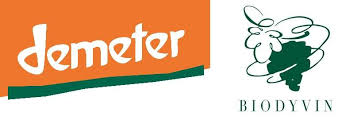Livraison à partir de 9.50€ pour la France !
Franco à 250€ de commande pour le France continentale et la Belgique.
 VIN ROUGE
VIN ROUGE
 complexe
complexe
Delivery within 4/5 working days, express by UPS, Chronopost or Fedex at home, on a relay point or by messaging

Tannat Las Brujas 2021
CB, Applepay, payment in 3 times Klarna, Transfer, Bancontact, CBC, Sfort, Giropay, IDEAL, EPS, Postpay, Maestro, American Express, Landscard, Belfius, Przlewy24 , ...
Features
L’Uruguay est un petit pays entre le Brésil et l’Argentine. La viticulture fut implantée par les colons espagnols au XVIIe siècle. C’est dans la seconde partie du XIXe siècle qu’un basque du nom de Pascual Harraigue introduit le Tannat, originaire de Madiran, qui allait devenir le cépage emblématique de ce pays. Celui-ci produit des vins denses aux tanins puissants mais assouplis par la douceur méditerranéenne du climat de l’Uruguay. Les vignobles sont essentiellement implantés au Nord et Nord-Ouest de Montevideo où la Rio Plata apporte une chaleur modérée. Le cépage Tannat Ce cépage d’origine Béarnaise est aujourd’hui plus cultivé en Uruguay qu’en France. Appelé également Harriague, du nom de Pascual Harriague qui l’a amené du Pays Basque en 1870, il possède des grappes cylindriques, compactes, avec des grains bleus-noirs à peau épaisse, colorées. C’est un cépage tardif et productif. Il aime les sols graveleux et sableux. A maturité, il donne des vins fruités (framboise), charpentés. Il lui faut du temps pour s’assouplir, c’est le complice idéal du confit de canard.
Vignoble: Las Brujas, Uruguay
Année de plantation: 1999
Sols: limon argileux, fertilité moyenne.
Cépage : 100% Tannat
Vinification : récolté à la main. Sélection, éraflage et foulage. Macération pré-fermentaire à basse température pendant deux jours. Fermentation délicate avec des levures sélectionnées à 14/17 ° C en 8 jours. Elevage de 3 mois en fûts de chêne américains et français. Enfin les vignerons décident du meilleur assemblage entre les lots des différentes parcelles afin d'obtenir l'équilibre parfait entre style, complexité et profil recherché.
Dégustation : La robe est grenat bien sombre, mais translucide. Le nez est fin et complexe, sur le coulis de fruits noirs, le cèdre, le graphite, le poivre noir, avec une pointe ferreuse/sanguine. La bouche est ronde, ample, enveloppante, déroulant avec une certaine classe une matière veloutée, profonde, dotée d'une aromatique fraîche et intense amenant de la tension. L'ensemble est très bien équilibré, racé et déjà très abordable pour un Tannat si jeune. La finale délivre une belle mâche gourmande, très fruitée, aux tanins bien mûrs et totalement fondus, avec une belle rétro sur les épices et les notes sanguines et salines.
Alcool: 13.5 %

House founded in 2003

One of the widest selections of the web of authors' wines and craftsmen
What is an author wine?
This can be so diverse depending on the personality of their sire, that it is easier to define what it is not. An author wine is anything but a standard, stereotypical wine, made to please as many people as possible. It is therefore rarely produced in millions of copies, copying itself from vintage in vintage.
An author wine is therefore a wine that does not look like that of the neighbor. Which from year to year will evolve according to the vagaries of the weather and the mood of the author - the two that can be linked. Because the author does not rely on market studies to carry out his boat. He makes his wine as he feels, as he likes, as he can, sometimes ... and too bad if he does not please everyone.
This is why author wines are sometimes classified as "table wine" or "France wine". Because the winemaker did not plan the authorized grape variety*, makes the assembly or vinification recommended in the name **. He is often a bit rebellious, our author. But that is why we like it! ... That said, author's wines are not systematically marginal: they are present in most of the appellations, and can be part of the elite of these this***. Because they are not content to have personality: they are good, in addition! With in general aDegree of TorchabilityVery high: we never tire of it at the end of the first sip.
As author's wines are not chaptalized, levied, hacked ... They can have very different profiles depending on the vintage. It is up to us (resellers and consumers) to accept them as they are, and to remain faithful to the producers, because they need us to continue their activity.
______________________________
* For example, theTouriga Nacionalin the Minervois, or theSyrahIn Forez ribs. They are crazy, these authors!
** Some winegrowers dare to produceSweety with Mourvèdre or oneNatural sparkling with Pineau d'Aunis
*** Like those of Jean-François Ganevat in the Jura or Zind-Humbercht in Alsace






